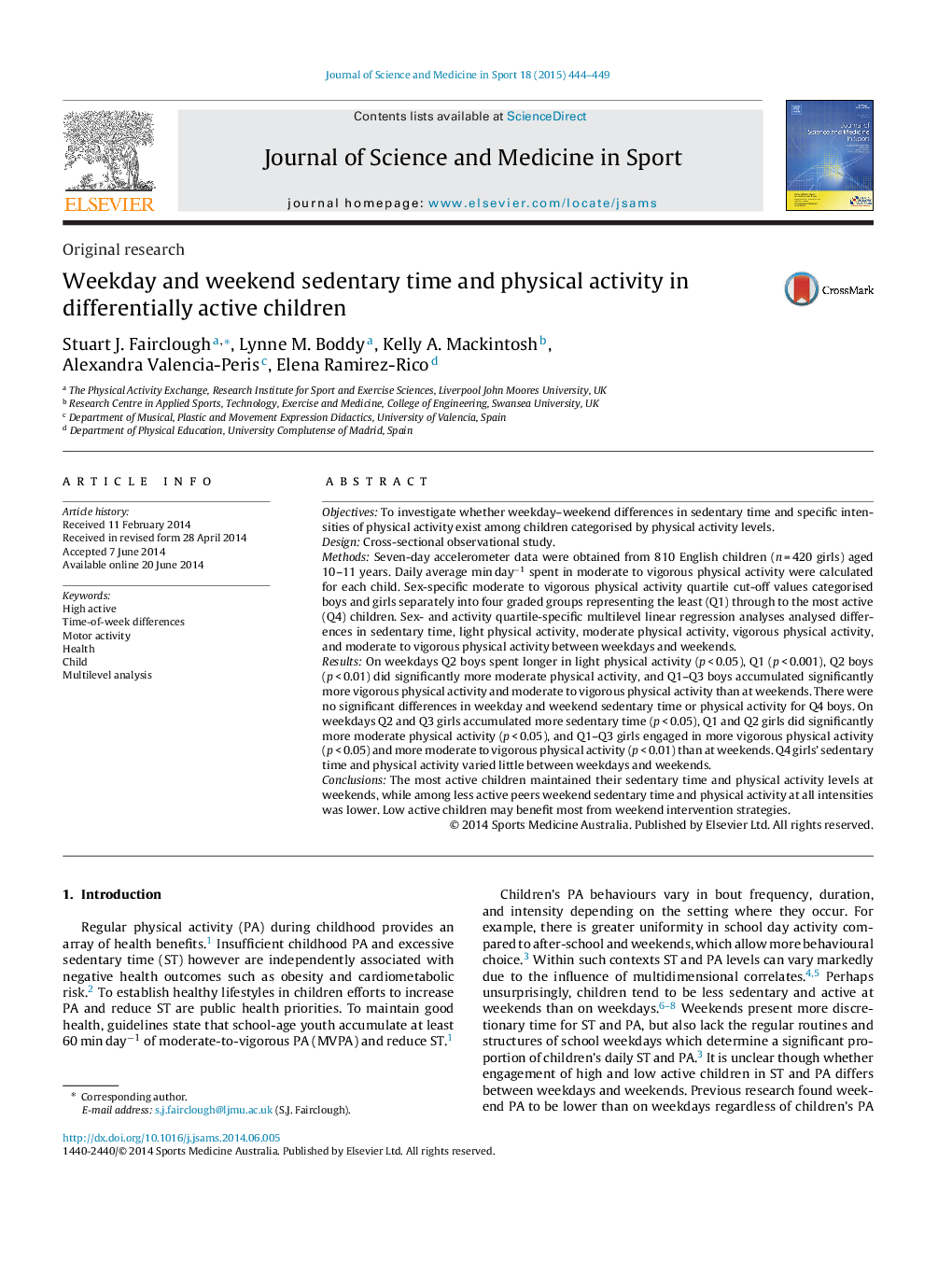| کد مقاله | کد نشریه | سال انتشار | مقاله انگلیسی | نسخه تمام متن |
|---|---|---|---|---|
| 2704242 | 1144675 | 2015 | 6 صفحه PDF | دانلود رایگان |
ObjectivesTo investigate whether weekday–weekend differences in sedentary time and specific intensities of physical activity exist among children categorised by physical activity levels.DesignCross-sectional observational study.MethodsSeven-day accelerometer data were obtained from 810 English children (n = 420 girls) aged 10–11 years. Daily average min day−1 spent in moderate to vigorous physical activity were calculated for each child. Sex-specific moderate to vigorous physical activity quartile cut-off values categorised boys and girls separately into four graded groups representing the least (Q1) through to the most active (Q4) children. Sex- and activity quartile-specific multilevel linear regression analyses analysed differences in sedentary time, light physical activity, moderate physical activity, vigorous physical activity, and moderate to vigorous physical activity between weekdays and weekends.ResultsOn weekdays Q2 boys spent longer in light physical activity (p < 0.05), Q1 (p < 0.001), Q2 boys (p < 0.01) did significantly more moderate physical activity, and Q1–Q3 boys accumulated significantly more vigorous physical activity and moderate to vigorous physical activity than at weekends. There were no significant differences in weekday and weekend sedentary time or physical activity for Q4 boys. On weekdays Q2 and Q3 girls accumulated more sedentary time (p < 0.05), Q1 and Q2 girls did significantly more moderate physical activity (p < 0.05), and Q1–Q3 girls engaged in more vigorous physical activity (p < 0.05) and more moderate to vigorous physical activity (p < 0.01) than at weekends. Q4 girls’ sedentary time and physical activity varied little between weekdays and weekends.ConclusionsThe most active children maintained their sedentary time and physical activity levels at weekends, while among less active peers weekend sedentary time and physical activity at all intensities was lower. Low active children may benefit most from weekend intervention strategies.
Journal: Journal of Science and Medicine in Sport - Volume 18, Issue 4, July 2015, Pages 444–449
